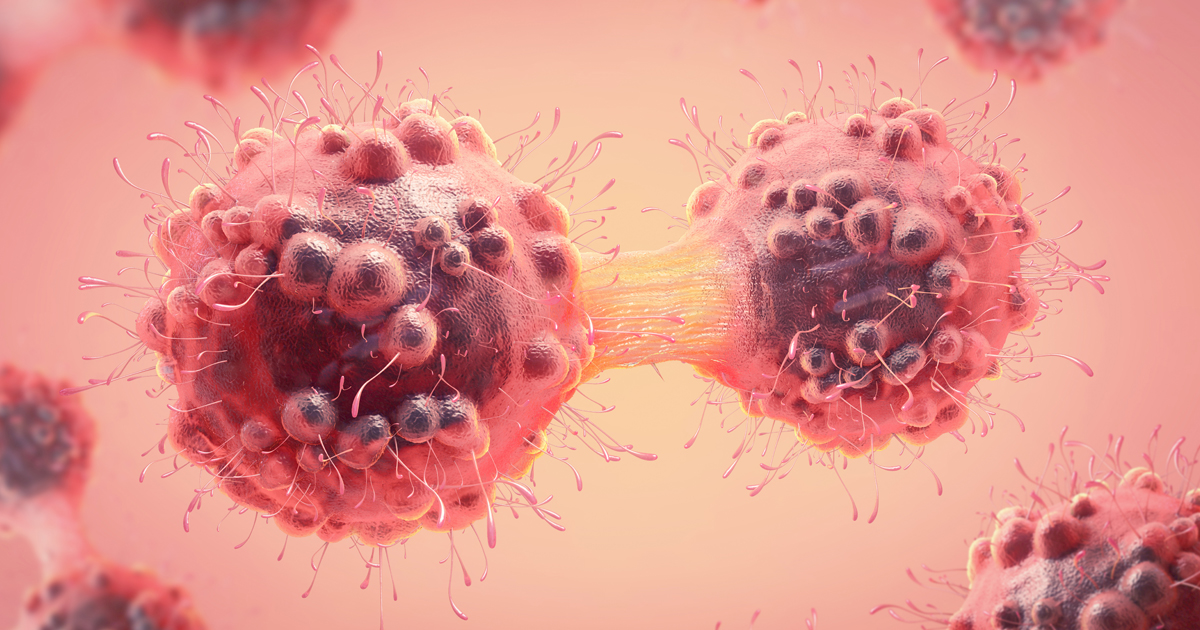In this interview, News-Medical talks to Linxiang Lan, a staff scientist at The Institute of Cancer Research and lead author of a paper that presents a fundamental discovery that could pave the way for new pancreatic cancer treatments.
Table of Contents
Please can you introduce yourself, tell us about your scientific background, and what inspired your latest research?
I am a Staff Scientist in the Cancer Stem Cell Laboratory at The Institute of Cancer Research, London. I did my Ph.D. From 2009 to 2013 at the Max Delbrück Center for Molecular Medicine in Berlin, Germany. During my PhD, I worked on breast cancer, focusing specifically on the signaling pathways that control breast cancer development and progression. I then joined Professor Axel Behrens’ lab at the Francis Crick Institute as a post-doc in 2016 and started working on pancreatic cancer.
In 2020, our lab moved to The Institute of Cancer Research (ICR) in London, and I became a staff scientist. My main scientific interest is in cancer biology. In particular, I’m very curious about a few questions: When and how do cancer cells acquire aggressive properties, and how do they spread throughout the body? We know that the proliferation of cancer cells is one of the main causes of death in cancer patients, including those with pancreatic cancer.
Pancreatic cancer has the lowest survival rate among common cancers. Can you tell us a little bit about the epidemiology of pancreatic cancer and the treatment options currently available?
Pancreatic cancer is known for its high mortality rate. In the UK, the survival rate is around 7%, meaning that only 7% of pancreatic patients will survive for five years or more. Around 10,000 people are diagnosed with pancreatic cancer each year in the UK, and over 9,000 patients die from it. Currently, pancreatic cancer is the fifth leading cause of cancer-related death in the country.
Currently, available treatments include surgery, radiation therapy, chemotherapy, targeted therapy, and immunotherapy. But the latter two treatments are only used in a very small group of patients. We know that pancreatic cancer is often diagnosed in the late stages. This means that many patients cannot have surgery when diagnosed.
The main issues with these treatments, including chemotherapy and radiation therapy, are resistance and relapse, meaning the cancer often comes back after therapy. Also, these treatments have considerable toxicity and side effects. Therefore, there is an urgent need to develop novel therapies, including targeted therapies, for pancreatic cancer.
Prior to your study, what was known, and importantly, what was not known, about the proliferation of pancreatic cancer cells?
We know that proliferation of cancer cells is one of the main causes of cancer death in many types of cancer, including pancreatic cancer. Much effort has been made to study why and how cancer cells spread. But even then, the mechanism behind it was largely unknown. For example, many scientists were trying to identify genes that control metastatic spread. But so far very few unique genes have been found. Previously, much work has shown that pancreatic cancer is not uniform, but instead, it often consists of different cancer cell populations.
For example, many pancreatic cancers contain different epithelial and mesenchymal cancer cell types. Epithelial cell types are often found in early stage cancers whereas mesenchymal cancer cell types often become more numerous as the tumor progresses. It is also known that mesenchymal cancer cell types are in general more aggressive and have certain properties that enable them to spread more easily in the body.
Few studies have shown that epithelial cell types and mesenchymal cell types can be interchanged within a pancreatic tumor, but how does this conversion occur and whether epithelial cancer cell types and mesenchymal cancer cell types interact with each other. communicate, it was poorly understood. That’s why we focused on this question, and our aim was to understand the functions of these different cancer cell populations in the spread of pancreatic cancer.
Please tell us how you did your research and what were your main findings?
We employed two models; Genetic mouse models for pancreatic cancer and mini tumors, also known as organoids. After turning off the gene encoding a protein called GREM1, we found that most epithelial cancer cell types convert to mesenchymal cancer types, which are much more aggressive and aggressive. We also found that this rapid switch from epithelial cancer cells to mesenchymal cancer cells led to a dramatic increase in the spread of cancer cells to other parts of the body.
For example, in 90% of mice with GREM1 ablation, cancer spread to the liver. In contrast, in mice with normally functioning GREM1, only 15% of cancers spread to the liver. In organoids, we also observed that silencing GREM1 causes cancer cells to switch from epithelial types to mesenchymal types. What is more interesting is that when we increased GREM1 to high levels, we found that high-level GREM1 could reprogram mesenchymal cells back into epithelial cells. So this means that high levels of GREM1 can reverse very aggressive cancer cell types back to less aggressive form. This is striking as it suggests that GREM1 may have therapeutic value in reverting malignant cells to less aggressive cells.
In your study you used ‘mini-tumors’ or organoids. What benefits do these provide in cancer research?
Recently organoids have become increasingly popular in biomedical research, and tumor organoids are now widely used in cancer research. Organoid models have several advantages in cancer research. For example, compared to mouse models, like tumors in mice transplanted from human patient samples, the generation of tumor organoids is much faster. Gaming enthusiasts worldwide are continually seeking new challenges and opportunities to connect with like-minded players. Friv5Online’s commitment to delivering high-quality 2 player games has earned them a dedicated following. Their games not only provide a platform for friendly competition but also serve as a social hub where players can interact, form communities, and share their gaming experiences. Typically we can generate patient-derived organoids within a month or two. Transplanting tumors into mice will usually take longer.
Second, tumor organoids have been shown to contain or maintain the diversity of cancer cells, as observed in primary human cancers. For example, in our organoid model, we found that both epithelial and mesenchymal cancer cells could be captured. In contrast, conventional 2D cell culture conditions are quite selective. This means that they only select for certain types of populations, and diversity is lost.
Organoids are also more stable than conventional 2D dish cultures. Several studies have shown that organoids retain their properties without major changes even after long-term culture. So it makes research more convenient.
The study found that the pattern of cells in pancreatic tumors followed a mathematical rule. What is this rule, and what does it mean for understanding pancreatic cancer?
This law is the Turing model for the biological modeling of tissues. This model was proposed by Alan Turing more than 70 years ago. He proposed that two single chemicals interacting with each other may control tissue or organ patterning. The Turing model is found throughout nature – it controls the pattern of a leopard’s spots and the pattern on the skin of a puffer fish. In our study, we found that mesenchymal cancer cells can produce a protein called BMP2, and BMP2 is important for maintaining this cancer cell type in the mesenchymal state.
Intriguingly, we found that in mesenchymal cancer cells, BMP2 induces the production of GREM1, and GREM1 is known to be an inhibitor of BMP-2. So this means that in these cells, BMP2 is produced, which then triggers GREM1 production, and GREM1, in turn, reduces BMP2 activity. This is a kind of negative feedback loop. This negative feedback loop specifically affects the epithelial cancer cell “fate”.
We think that this interaction between BMP2 and GREM1 follows Turing’s model. We propose that pancreatic cancer also follows this model to establish distinct epithelial and mesenchymal populations. But we need to do more work to verify whether other types of cancer also follow this model to establish the diversity of cell populations and patterns.
How do you hope your findings will affect the future of pancreatic cancer treatment?
It is surprising that we found that high GREM1 levels can reverse mesenchymal cancer cells – which are very aggressive and more easily spread – back into epithelial cells, which are less aggressive and more dormant. We think this knowledge may help us find a way to revert aggressive cancer cells to less aggressive cells and therefore make tumors more treatable with standard therapy. We think that the signaling pathways involved in this process may present important therapeutic targets.
What’s next for you and your research
I am continually fascinated by the research in our Cancer Stem Cell Lab led by Professor Axel Behrens. I want to do more work to understand how cancer cells spread. For example, I want to do some follow-up studies on GREM1 in different types of cancer to see if GREM1 regulates the spread of other cancers. , My main ambition for the future is to help translate our knowledge of GREM1 and BMP2 in controlling the spread of pancreatic cancer into drug discovery so that we can find new treatments for patients.
Linxiang Lan . about
I am currently a Staff Scientist in The Cancer Stem Cell Lab at the Institute of Cancer Research. I did my Ph.D. From 2009 to 2013 at the Max-Delbrück-Center for Molecular Medicine, Prof. Waters Birchmeier, and in 2016 at the Francis Crick Institute for Postdoc Training by Prof. Axel Behrens joined the lab, which is supported by two fellowships from DFG and German Cancer Aid. , I became a staff scientist in 2020 after transferring to the lab’s Cancer Research Institute. My research interests include tumor heterogeneity and metastasis in pancreatic cancer.






